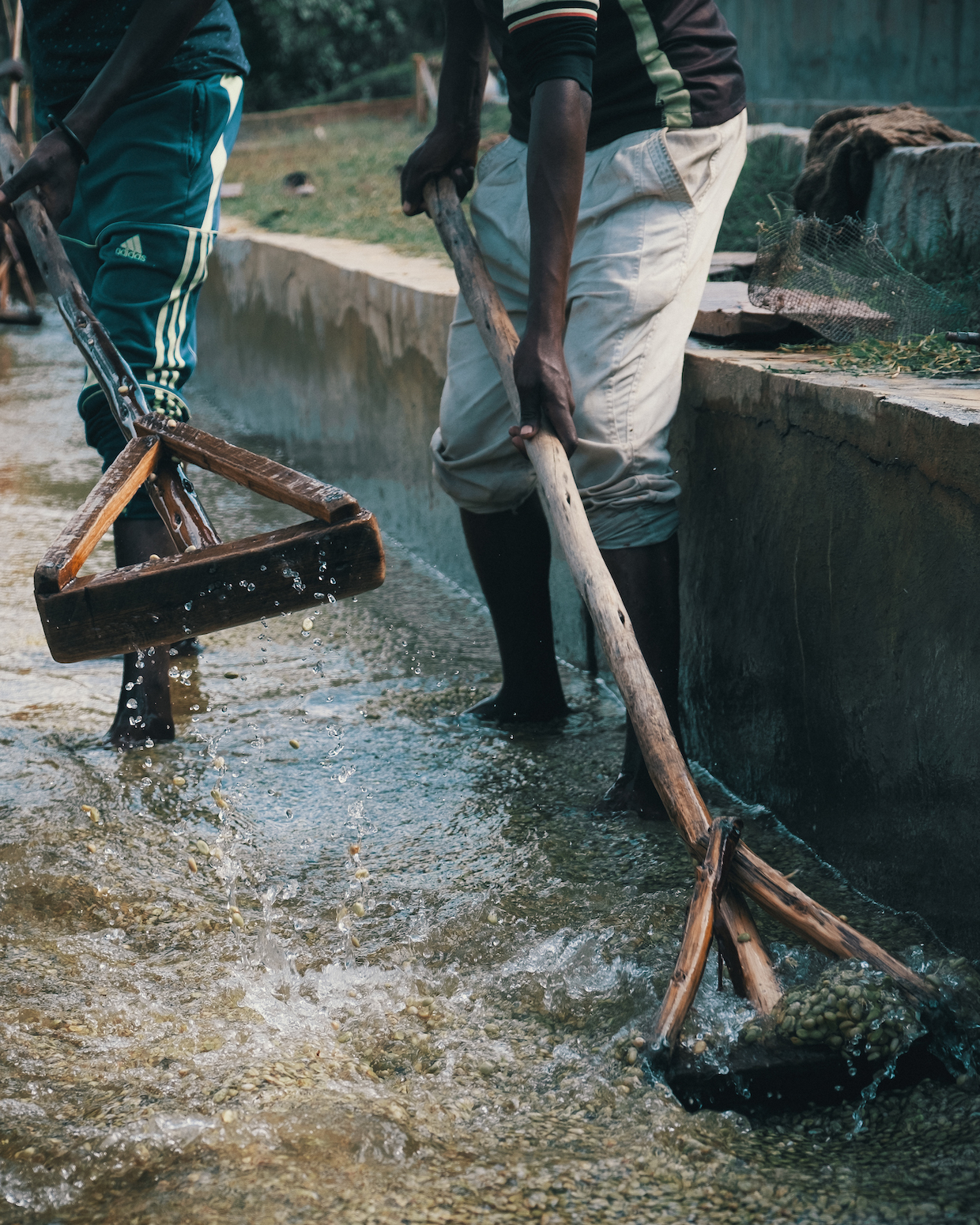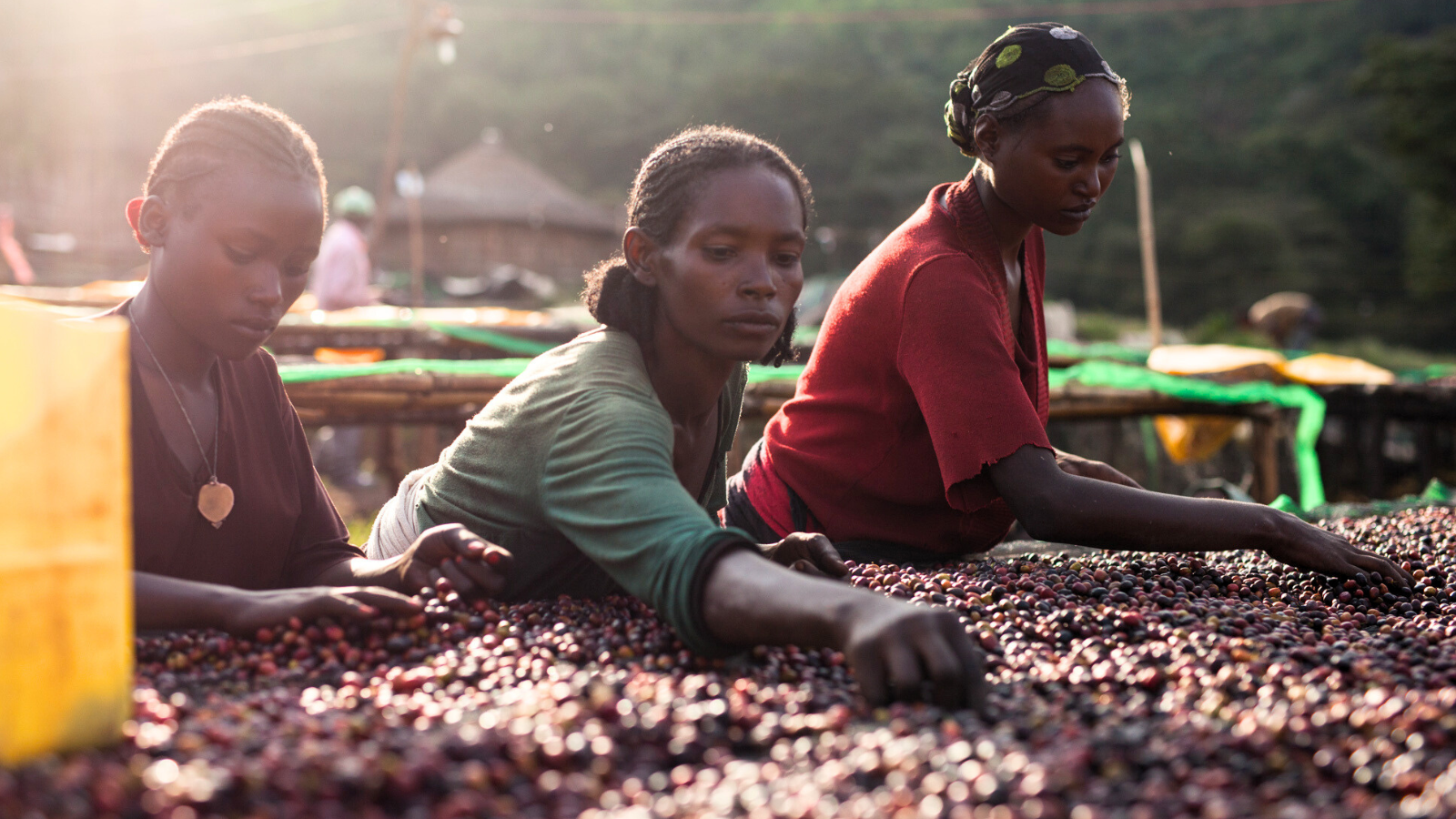
Sidama Sunrise: Why Sidama Is Ethiopia’s Most Iconic Coffee Region
Share
Sidama Sunrise – Where It All Begins
When we talk about legendary coffee origins, one name rises with the morning mist: Sidama.
Nestled in Ethiopia’s lush southern highlands, Sidama is globally celebrated for producing some of the most distinctive Arabica coffees in the world.
And for good reason.
With elevations between 2,000–2,200 meters, rich volcanic soil, and ideal rainfall, Sidama offers the perfect environment for slow-growing, flavor-packed beans. These high-altitude conditions—combined with traditional farming methods—create coffees with bright acidity, floral aromatics, and berry-like sweetness.
But the story of Sidama doesn’t begin in the soil.
It starts centuries ago—with a curious goat herder named Kaldi.
As legend goes, Kaldi noticed his goats acting a little… differently. They were energetic—dancing even—after nibbling on bright red berries from a wild shrub. Intrigued, Kaldi tried the fruit himself.
That shrub? It was wild Arabica, native to the Ethiopian highlands.
This moment sparked humanity’s relationship with coffee—a journey that would stretch across centuries and continents.
Heirlooms and High Elevation
Today, coffee in Sidama has evolved from wild forest plants to heirloom varietals, grown on small farms passed down through generations.
Here, farmers cultivate indigenous landraces like 74110 and 74112, chosen for their disease resistance and exceptional cup quality. These aren’t mass-produced clones—they’re genetically diverse, uniquely expressive, and deeply connected to their origin.
That said, Sidama isn’t one-note.
While natural processing is most common, the region is also home to dozens of washing stations and cooperatives producing washed coffees—noted for their tea-like clarity and citrus-forward brightness. These often make their way to specialty roasters and competitions around the world.
Still, the natural process remains a pillar of Sidama’s identity—especially in communities where coffee is less about the market, and more about honoring heritage.
“Naturally processed coffees can be extraordinary… but they require precision, patience, and care.”
— James Hoffmann, The World Atlas of Coffee
 Washed Process: Coffee cherries are pulped and fermented before being rinsed and dried—producing clean, crisp flavors with citrusy brightness.
Washed Process: Coffee cherries are pulped and fermented before being rinsed and dried—producing clean, crisp flavors with citrusy brightness.
 Natural Process: Whole coffee cherries are sun-dried on raised beds—resulting in vibrant, berry-forward flavor and syrupy sweetness.
Natural Process: Whole coffee cherries are sun-dried on raised beds—resulting in vibrant, berry-forward flavor and syrupy sweetness.
Natural processing requires skill. Farmers must harvest only ripe cherries, monitor moisture levels daily, and hand-turn the fruit as it dries—exposed to sun, wind, and weather. A single misstep can compromise the batch.
But when it’s done right? The result is unforgettable: juicy berry notes, syrupy sweetness, and layers of wine-like depth.
In Sidama, every raised bed is a canvas. Every cherry, a brushstroke.
And the final cup? A masterpiece of patience and place.
What Coffee Means to the People of Ethiopia
In Ethiopia, coffee is far more than an export.
It’s a daily ritual. A rhythm. A reason to gather.
More than 15 million Ethiopians depend on coffee for their livelihoods—from smallholder farmers and harvesters to traders cycling beans through bustling open-air markets.
But beyond economics, coffee holds a spiritual place in Ethiopian culture.
It takes center stage in the traditional coffee ceremony—a slow, meaningful ritual passed down through generations.

It begins with raw green beans, roasted fresh over an open flame. The air fills with rich, nutty aroma. The beans are ground by hand, brewed in a jebena (a clay coffee pot), and served in three rounds: abol, tona, and baraka—each one layered with hospitality and symbolism.
And yes, it takes time.
But that’s the point.
It’s not just about caffeine—it’s about presence. It’s how stories are shared. How guests are honored. How community is built, one steaming cup at a time.
“Buna dabo naw.”
Coffee is our bread.
It nourishes not just the body—but the bond between people.
What Makes Sidama Coffee So Special?
To appreciate Sidama coffee, you need to zoom in—beyond tasting notes—into the hands, methods, and traditions that shape every bean.
Most of Sidama’s coffee is grown by smallholder farmers who tend just a few hectares. These aren’t large estates with mechanical rows. These are family plots, shaded by enset trees and native forest, cultivated with care and passed down like heirlooms.
And among the defining traits of Sidama coffee?
Natural sun-dried processing.
After handpicking only the ripest cherries, farmers spread them out on raised drying beds—allowing the fruit to dry slowly over days and weeks. This “dry process” lets the bean absorb the fruit’s sugars and character, resulting in vibrant, jammy flavor profiles.
About 71% of Ethiopian coffees are processed this way. In Sidama, it’s more than method—it’s cultural identity.
It’s efficient in areas with limited water access. It’s environmentally sustainable. And more than anything, it protects the taste of the land—allowing you to experience the terroir in every sip.
Introducing Sidama Sunrise: A Taste of Tradition
Sidama Sunrise is our tribute to the region that started it all.
Grown on family farms in the Sidama region and naturally sun-dried at a local cooperative, this coffee is crafted using traditional methods passed down for generations. The result is a clean, fruit-forward cup that reflects both the land and the people behind it.
Cupping notes:
- Bright acidity
- Delicate body
- Caramel
- Vanilla
- Floral
- Berry
Coffee Details:
- Region: Sidama
- Altitude: 2,000–2,200 meters
- Varietals: Local heirloom (Sidamo)
- Process: Natural, sun-dried
It captures everything we love about Sidama—pure, bright, rooted in heritage, and easy to love.
And just like every Etho Blend product, this coffee does more than taste good. With every bag you buy, 20% of the profit goes to a trusted charity helping children, families, and communities rise above adversity.
👉 Learn how your purchase makes a difference
